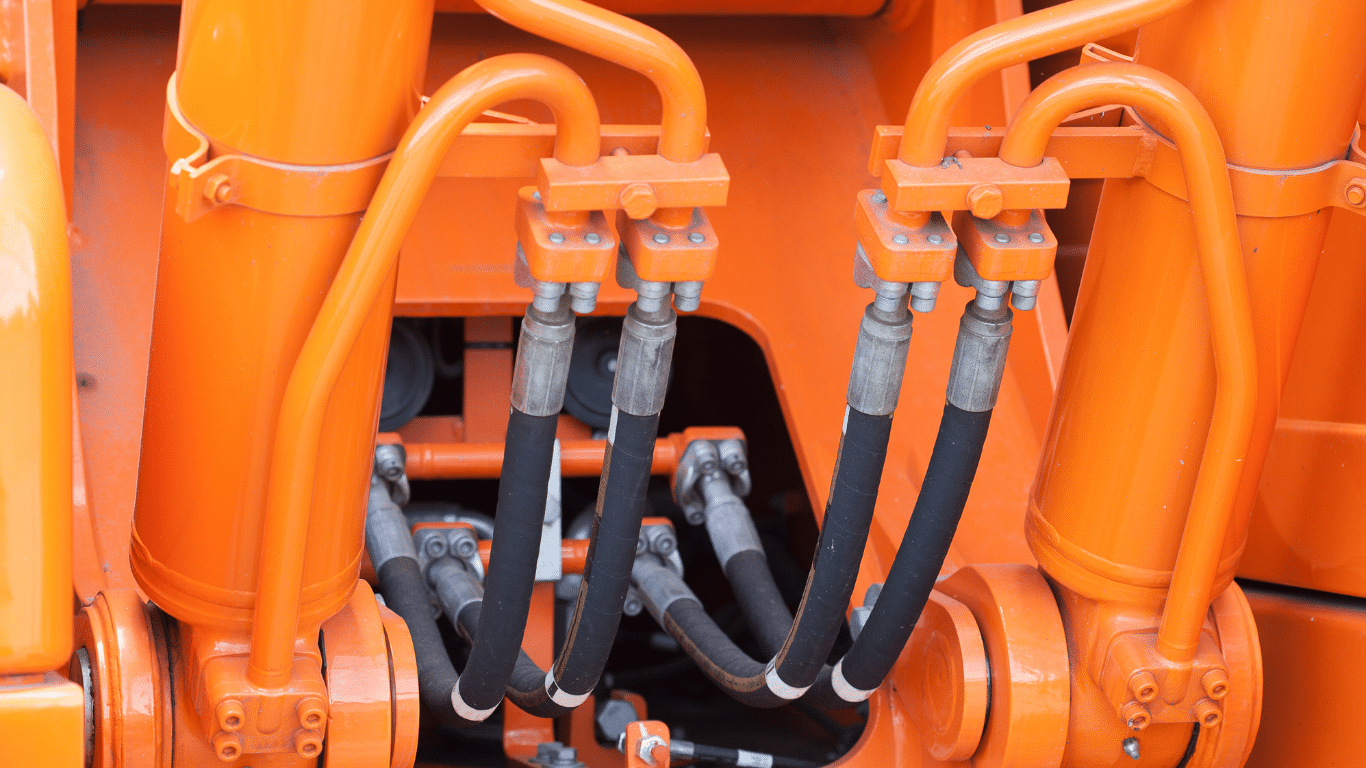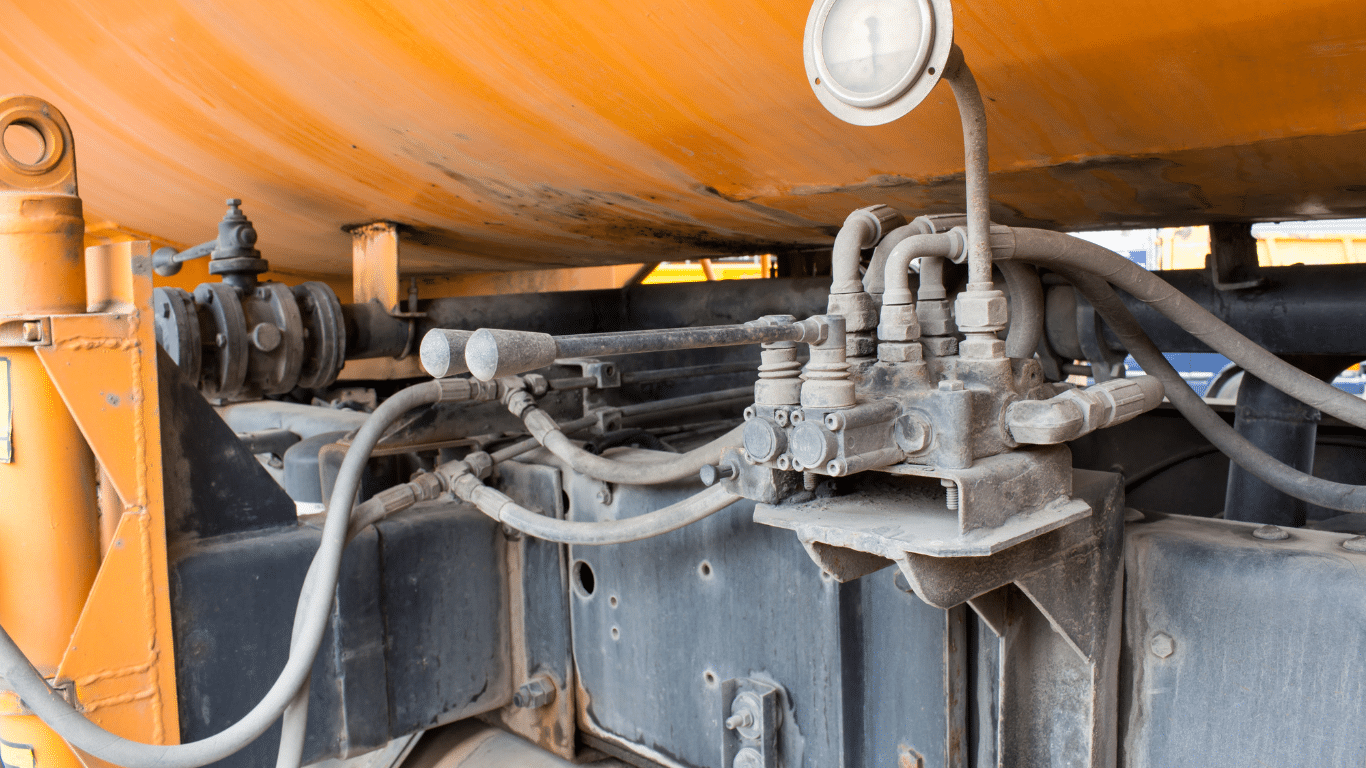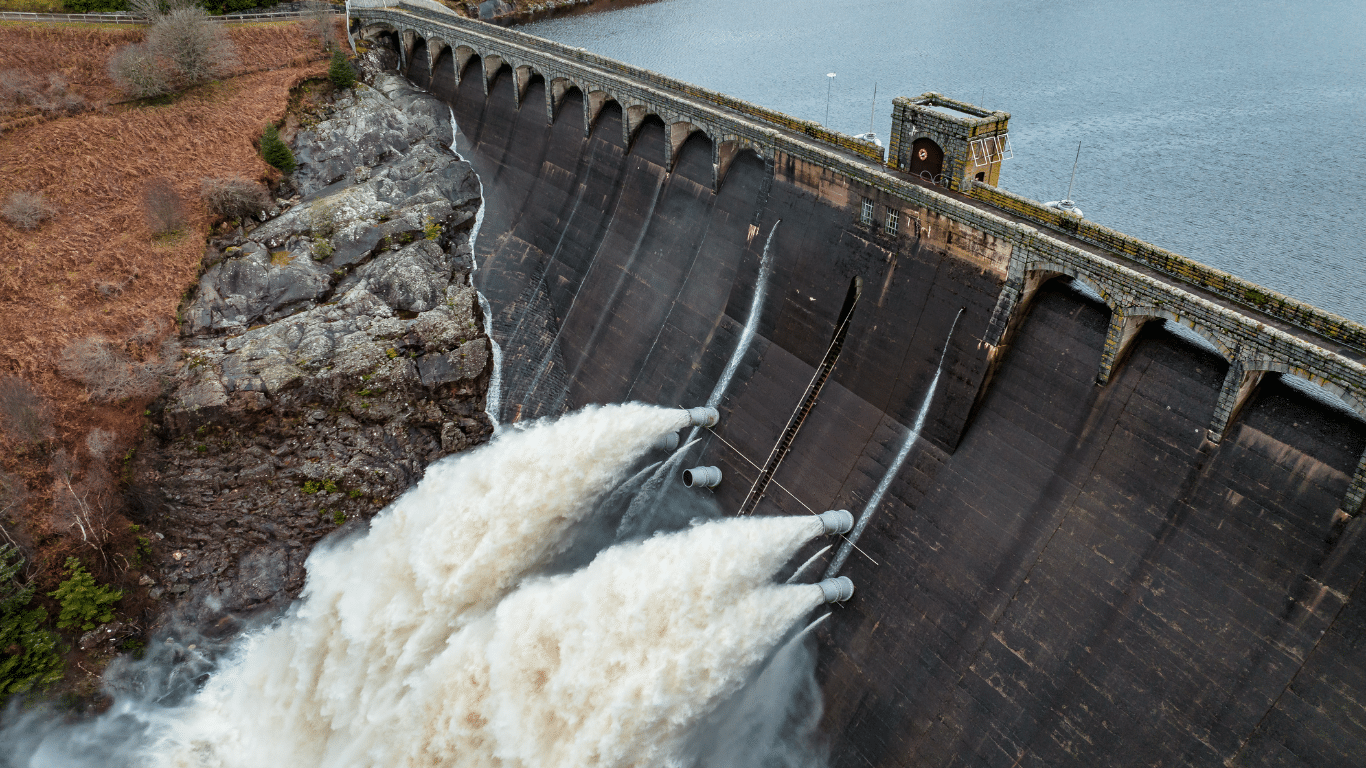Fluid mechanics and hydraulics in civil engineering play an important role in understanding how liquids and gases behave in various structures and systems. Fluid mechanics deals with the study of fluids (liquids and gases) and their properties, such as flow, pressure, and velocity. Hydraulics focuses specifically on the behavior of liquids, particularly water, in engineering applications.
Engineers use principles from these fields to design efficient water supply systems, drainage systems, and hydraulic structures like dams and bridges. By understanding fluid behavior, engineers can predict how water will move through pipes, channels, and other infrastructure, ensuring safe and effective designs for various construction projects.
Understanding Fluid Mechanics and Hydraulics in Civil Engineering
Fluid mechanics and hydraulics play crucial roles in civil engineering, shaping how we design and build structures to withstand the forces of water and other fluids. In simple terms, fluid mechanics deals with the behavior of fluids (liquids and gases) at rest or in motion, while hydraulics focuses on the practical application of fluid mechanics principles in engineering. In this article, we’ll explore the basics of fluid mechanics and hydraulics in civil engineering, discussing their significance, fundamental principles, and real-world applications.
Fundamental of Fluid Mechanics
What is Fluid Mechanics?
Fluid mechanics is the study of how fluids behave and interact with their surroundings. It encompasses the study of both liquids and gases, examining their properties, such as pressure, density, viscosity, and flow rate.
Importance of Fluid Mechanics in Civil Engineering
In civil engineering, understanding fluid mechanics is crucial for various applications, including the design of water supply systems, drainage systems, dams, bridges, and coastal structures. Whether it’s calculating the forces exerted by flowing water on a bridge or designing efficient irrigation systems, fluid mechanics principles are indispensable.
Fundamental Principles of Fluid Mechanics
Pascal’s Law
Pascal’s law states that pressure exerted at any point in a confined fluid is transmitted equally in all directions. This principle finds applications in hydraulic systems, such as hydraulic lifts and hydraulic brakes.
Archimedes’ Principle
Archimedes’ principle states that the buoyant force acting on an object submerged in a fluid is equal to the weight of the fluid displaced by the object. This principle explains why objects float or sink in fluids and is essential for designing floating structures and ships.
Bernoulli’s Principle
Bernoulli’s principle describes the relationship between the velocity and pressure of a fluid in motion. It states that as the velocity of a fluid increases, its pressure decreases, and vice versa. This principle is crucial for understanding the behavior of fluids in pipes, aircraft wings, and other fluid flow systems.
Reynolds Number
The Reynolds number is a dimensionless parameter used to predict the flow regime of a fluid, whether it’s laminar or turbulent. It’s calculated based on the fluid velocity, density, viscosity, and characteristic length scale. Understanding the Reynolds number helps engineers determine the flow conditions in pipes, channels, and other hydraulic structures.
Applications of Fluid Mechanics in Civil Engineering
Designing Water Supply Systems
Fluid mechanics principles are applied in designing water supply systems to ensure adequate water pressure, flow rate, and distribution. Engineers use hydraulic calculations to size pipes, pumps, and storage tanks, considering factors such as elevation, friction losses, and demand patterns.
Stormwater Management
In urban areas, effective stormwater management is essential to prevent flooding and erosion. Fluid mechanics principles help engineers design drainage systems, stormwater detention ponds, and culverts to control the flow of rainwater and minimize its impact on infrastructure and the environment.
Hydraulic Structures
Hydraulic structures, such as dams, levees, and canals, rely on fluid mechanic principles for their design and operation. Engineers analyze the forces exerted by water, including hydrostatic pressure and wave action, to ensure the structural stability and safety of these water control systems.
Coastal Engineering
Coastal engineering involves designing structures to protect coastlines from erosion, flooding, and storm surges. Fluid mechanics principles are applied to understand wave dynamics, sediment transport, and coastal processes, guiding the design of seawalls, breakwaters, and beach nourishment projects.
Key points: Fluid mechanics and hydraulics in civil engineering
How Does Fluid Mechanics Relate to Civil Engineering?
Fluid mechanics is closely related to civil engineering as it provides the foundational principles for understanding the behavior of liquids and gases in various engineering applications. In civil engineering, fluids such as water play a significant role in infrastructure projects like bridges, dams, and drainage systems. By applying fluid mechanics principles, engineers can analyze the forces exerted by fluids on structures, design efficient water supply and drainage systems, and manage water resources effectively.
How Is Hydraulics Used in Civil Engineering?
Hydraulics is a branch of engineering that focuses on the practical application of fluid mechanics principles. In civil engineering, hydraulics plays a crucial role in designing and operating systems that involve the controlled flow of water and other fluids. This includes water supply networks, sewage systems, irrigation systems, and hydraulic structures like dams and canals. Hydraulics is used to calculate flow rates, pressure drops, and forces exerted by fluids, ensuring the safe and efficient operation of civil engineering infrastructure.
What Is the Application of Fluid Mechanics in Civil Engineering?
The application of fluid mechanics in civil engineering is vast and diverse. It encompasses various aspects of infrastructure design and operation, including water supply and distribution, stormwater management, coastal engineering, and hydraulic structure design. Fluid mechanics principles are used to analyze and predict the behavior of fluids in pipes, channels, rivers, and oceans, guiding the design and construction of resilient and sustainable infrastructure for communities.
What Is the Subject of Fluid Mechanics in Civil Engineering?
In civil engineering, the subject of fluid mechanics focuses on understanding how fluids behave and interact with their surroundings, particularly in the context of infrastructure projects. This includes studying properties such as pressure, density, viscosity, and flow rate, and applying fundamental principles like Pascal’s law, Archimedes’ principle, and Bernoulli’s principle to solve engineering problems related to fluid flow, water management, and hydraulic structure design.
What Is the Introduction of Fluid Mechanics in Civil Engineering?
The introduction of fluid mechanics in civil engineering provides engineers with the basic principles and concepts needed to analyze and solve problems related to fluid flow and hydraulic systems. It covers topics such as fluid properties, fluid statics, fluid dynamics, and the principles governing fluid behavior. Understanding fluid mechanics is essential for civil engineers to design and manage infrastructure projects involving the flow of water and other fluids effectively.
Is Mechanics Important for Civil Engineering?
Yes, mechanics is important for civil engineering as it provides the foundation for understanding how forces act on structures and materials. Mechanics principles, including statics, dynamics, and mechanics of materials, are essential for analyzing the behavior of buildings, bridges, dams, and other civil engineering structures under various loading conditions. By applying mechanics principles, civil engineers can design structures that are safe, durable, and able to withstand the forces they will encounter during their lifespan.
What Is Hydraulic Design in Civil Engineering?
Hydraulic design in civil engineering involves the planning and analysis of systems that control the flow of water and other fluids. This includes designing hydraulic structures such as dams, weirs, and channels, as well as water supply networks, sewage systems, and irrigation systems. Hydraulic design considers factors such as flow rates, pressure drops, sediment transport, and environmental impacts to ensure the efficient and sustainable management of water resources and infrastructure.
What Is Hydraulics in Fluid Mechanics?
Hydraulics in fluid mechanics refers to the practical application of fluid mechanics principles in engineering systems that involve the controlled movement of fluids. It encompasses the design, analysis, and operation of hydraulic systems such as pumps, valves, and pipelines, as well as hydraulic structures like dams, levees, and canals. Hydraulics plays a crucial role in various engineering disciplines, including civil engineering, mechanical engineering, and environmental engineering, where the management of water resources is paramount.
What Are the Hydraulics Used in Construction?
In construction, hydraulics are used in a variety of applications to power machinery and equipment, control movement and positioning, and apply force to materials. Hydraulic systems are commonly found in construction equipment such as excavators, cranes, bulldozers, and hydraulic lifts. They provide the necessary power and control to perform tasks like lifting heavy loads, digging trenches, and moving earth efficiently and safely on construction sites.
What Are the Applications of Hydraulics?
Hydraulics find numerous applications across various industries, including construction, automotive, aerospace, and manufacturing. In addition to construction equipment, hydraulics are used in hydraulic presses, hydraulic brakes, hydraulic steering systems, and hydraulic actuators. They are also employed in hydraulic cylinders for lifting and lowering loads, hydraulic motors for driving machinery, and hydraulic systems for controlling the movement of aircraft landing gear and flaps. Overall, hydraulics play a vital role in powering and controlling mechanical systems where precise movement, force, and power transmission are required.
Conclusion
Fluid mechanics and hydraulics are integral to civil engineering, enabling engineers to design and construct a wide range of infrastructure projects involving the flow of water and other fluids. By applying fundamental principles such as Pascal’s law, Archimedes’ principle, Bernoulli’s principle, and the Reynolds number, engineers can analyze and predict the behavior of fluids in various engineering applications. Whether it’s ensuring a reliable water supply, managing stormwater, or protecting coastal areas, a solid understanding of fluid mechanics is essential for creating sustainable and resilient infrastructure for communities around the world.
FAQs
What is fluid mechanics in civil engineering?
Explanation: Fluid mechanics in civil engineering deals with the study of how fluids behave and interact within the context of infrastructure projects like bridges, dams, and water supply systems.
How does fluid mechanics affect bridge design?
Explanation: Fluid mechanics principles influence the design of bridges by considering factors like water flow dynamics, hydrostatic pressure, and forces exerted by flowing water.
What are the applications of hydraulics in construction?
Explanation: Hydraulics in construction are used for powering machinery, controlling movement, and applying force in various tasks such as lifting heavy loads and excavating.
Why is fluid mechanics important in coastal engineering?
Explanation: Fluid mechanics plays a crucial role in coastal engineering by helping engineers understand wave dynamics, and sediment transport, and designing structures to protect coastlines from erosion and flooding.
How do civil engineers use hydraulic design in water supply systems?
Explanation: Hydraulic design is essential in water supply systems for sizing pipes, pumps, and storage tanks, ensuring adequate water pressure, flow rate, and distribution.
What is the significance of Bernoulli’s principle in civil engineering?
Explanation: Bernoulli’s principle, which relates fluid velocity to pressure, is significant in civil engineering for analyzing airflow over structures, designing ventilation systems, and understanding fluid flow in pipes and channels.
How do civil engineers apply fluid mechanics in stormwater management?
Explanation: Civil engineers use fluid mechanics principles in stormwater management to design drainage systems, detention ponds, and culverts to control the flow of rainwater and prevent flooding and erosion.
What role does fluid mechanics play in dam design?
Explanation: Fluid mechanics is crucial in dam design for analyzing forces exerted by water, determining water flow rates, and ensuring the structural stability and safety of the dam.
What are the key components of a hydraulic system used in civil engineering?
Explanation: Hydraulic systems in civil engineering typically consist of pumps, valves, hydraulic cylinders, and hydraulic motors, which are used for various tasks like lifting, pushing, and controlling fluid flow.
How do civil engineers use Reynolds numbers in hydraulic calculations?
Explanation: Civil engineers use the Reynolds number, a dimensionless parameter, to predict the flow regime of fluids in pipes and channels, helping them determine whether flow conditions are laminar or turbulent and design appropriate hydraulic structures accordingly.




